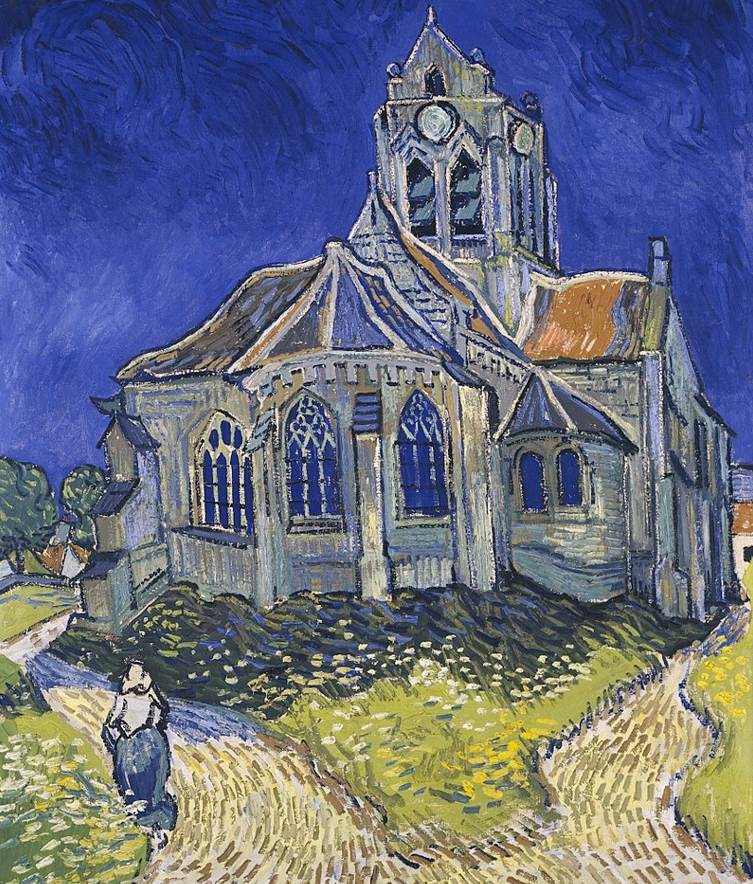If you’re interested in some of the finest works of art of the most renowned Realism, Impressionist, and Post-Impressionist artists, then there’s one place you simply have to visit, the Musée d’Orsay in Paris.
The museum is housed in one of the most extraordinary train stations in the world that was completed in the late 19th century and which used to house the former “Gare d’Orsay.”
This remarkable Beaux-Arts structure was the terminus station for trains coming from the southwest of France until 1939. It wasn’t until the year 1986 that the museum opened its doors after being completely redesigned by renowned Italian architect Gae Aulenti.
In this article, we’ll take a closer look at some of the most famous paintings at the Musée d’Orsay, artworks that you simply have to see during your visit.
PS: Even though this article only includes paintings, the Musée d’Orsay also houses an extended collection of sculptures, furniture, and photography from France dated between 1848 and 1914.
1. Starry Night Over the Rhône – Vincent van Gogh
- Date Created: 1888
- Dimensions: 72.5 cm × 92 cm (28.5 in × 36.2 in)
Starry Night over the Rhône is one of the 3 paintings of Vincent van Gogh depicting a starry night. The other two are “Starry Night” which he painted from his bedroom window at the mental asylum he stayed at in 1889, and “Café Terrace at Night,” another night scene in Arles.
This particular painting depicts a scene on the borders of the Rhône River in Arles, the town in southern France where he stayed in the late 1880s. This remarkable work of art is considered to be one of his finest paintings.
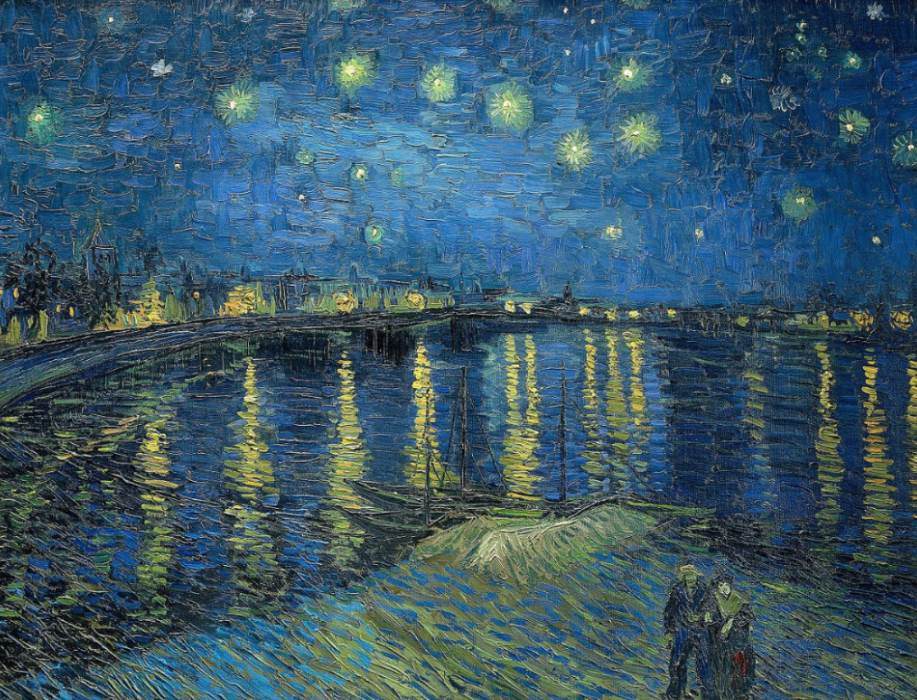
2. Le Déjeuner sur l’Herbe – Édouard Manet
- Date Created: 1863
- Dimensions: 208 × 264.5 centimeters (81.9 × 104.1 inches)
Le Déjeuner sur l’herbe was originally known as “Le Bain” or “The Bath” and was one of the works of Édouard Manet that was rejected for the Salon in Paris in 1863. He subsequently exhibited it at the 1863 Salon des Refusés and has been a controversial painting ever since.
This painting is considered to be a transitional painting between the Realism and Impressionism art movements. Manet deliberately chose a huge canvas to depict the heavy brushstrokes, giving it the appearance of an unfinished painting in some areas.
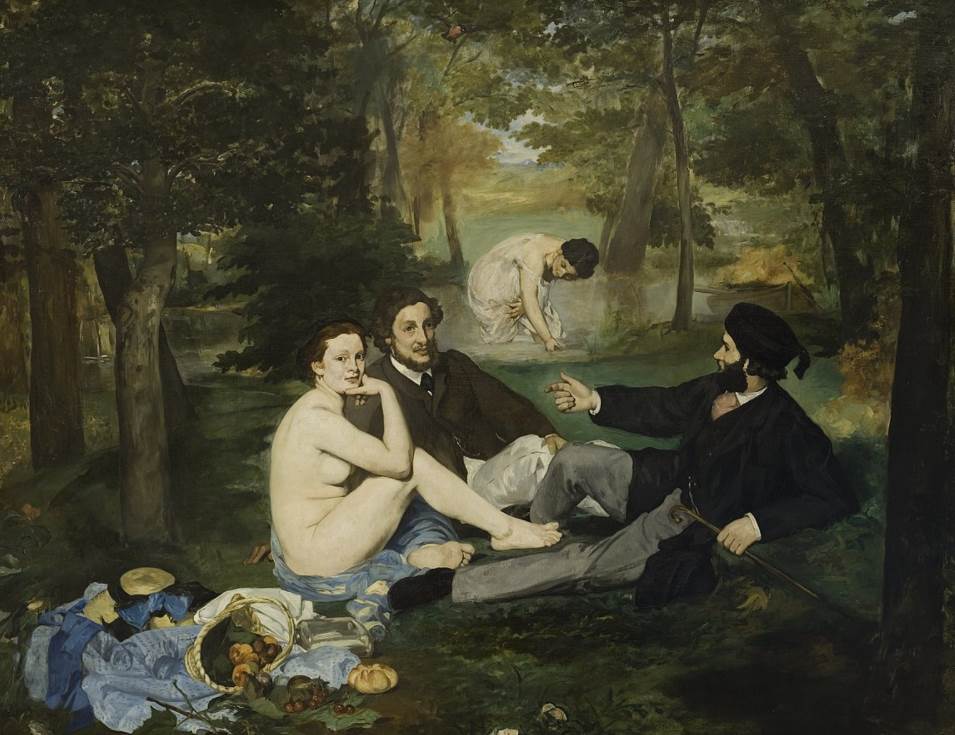
3. The Gleaners – Jean-François Millet
- Date Created: 1857
- Dimensions: 83.8 × 111.8 centimeters (33 × 44 inches)
The Gleaners is considered to be one of the most important works of the Realism art movement of the mid-19th century. It depicts female rural workers as they are doing their job, people who were considered to be at the bottom of the social ladder at the time.
The painting by Millet was displayed at the Paris Salon of 1857 and received negative reviews, mainly from the members of the middle and upper classes. They considered the painting to be too provoking as it was presumed to depict the exploitation of the lower class in France.
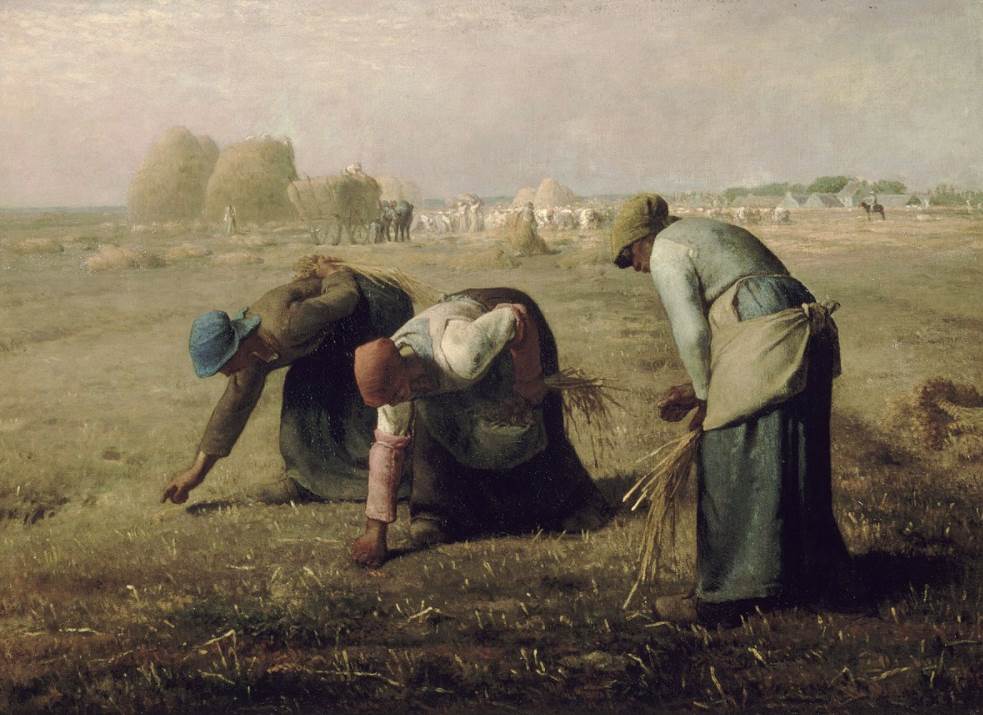
4. Whistler’s Mother – James McNeill Whistler
- Date Created: 1871
- Dimensions: 144.3 × 162.4 centimeters (56.81 × 63.94 inches)
The official name of the painting commonly referred to as “Whistler’s Mother” is “Arrangement in Grey and Black No. 1.” It depicts the mother of American-born artist James McNeill Whistler, a woman named Anna McNeill Whistler.
This painting can easily be described as one of the most famous paintings of an American outside of America. It has even been referred to as “The Victorian Mona Lisa,” a reference to the iconic painting by Leonard da Vinci on display at the Louvre Museum.
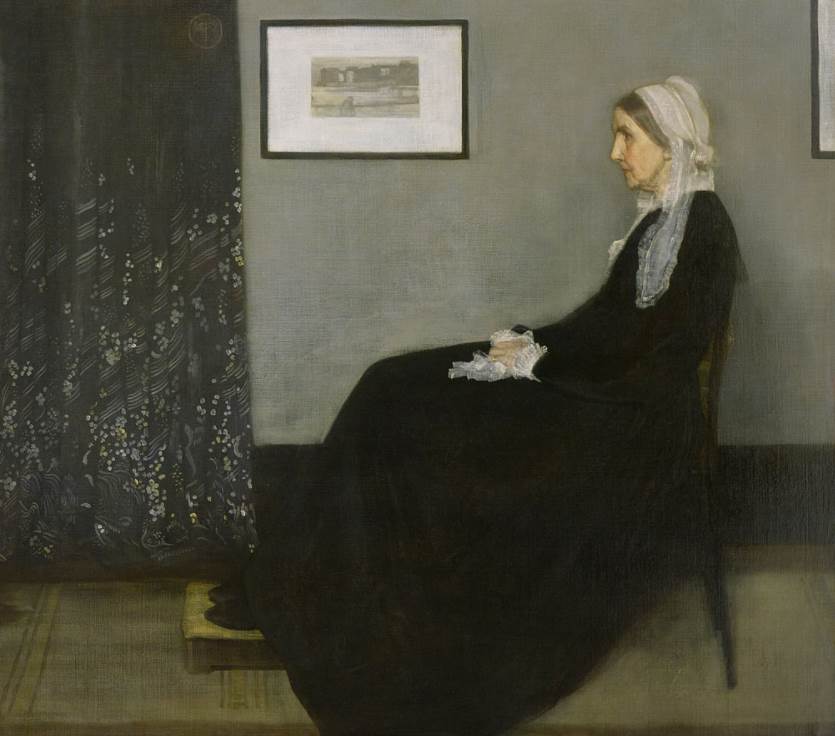
5. Bal du moulin de la Galette – Pierre-Auguste Renoir
- Date Created: 1876
- Dimensions: 131 × 175 centimeters (52 × 69 inches)
Bal du moulin de la Galette is considered to be one of the ultimate masterpieces of the Impressionist art movement. It depicts a scene taking place at the Moulin de la Galette, an area situated near the top of the Montmartre district in Paris.
Most of the depicted people are members of the working class who dressed up on Sundays to enjoy a relaxing afternoon here in the 19th century. In that sense, it’s a realistic scene depicted in the typical style of Impressionist artists.
6. The Ballet Class – Edgar Degas
- Date Created: 1871 -1874
- Dimensions: 85 x 75 centimeters (33 × 30 inches)
The Ballet Class is a famous painting by Edgard Degas which took nearly 3 years to complete. That’s for the simple reason that the artist abandoned this work and started working on a similar painting called “The Dance Class” before completing this one.
Both paintings were delivered to the man who commissioned them, a renowned operatic singer named Jean-Baptiste Faure. It depicts a ballet class conducted by Jules Perrot at the Paris Opera. The building in which the scene takes place burned down a year before and the opera moved to the Palais Garnier.
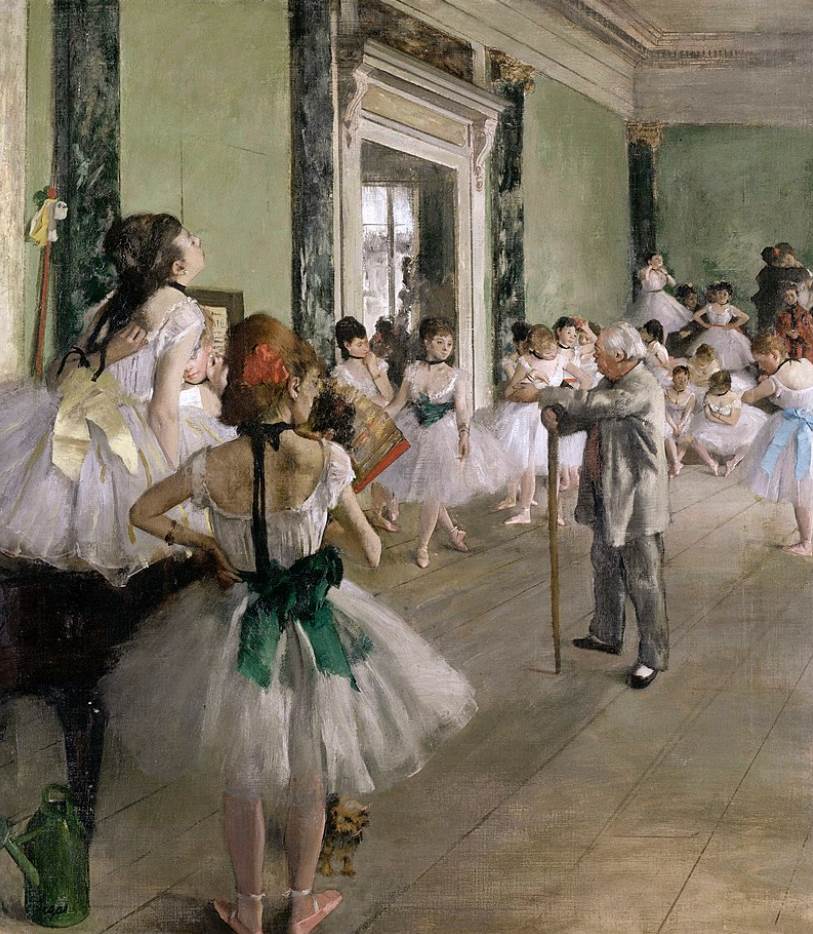
7. Luncheon on the Grass – Claude Monet
- Date Created: 1865 – 1866
- Dimensions: 248.9 × 218 centimeters (98 × 85.8 inches)
Luncheon on the Grass might sound familiar because this means the same as Le Déjeuner sur l’herbe. This work, however, was painted by Claude Monet and was a response painting to the controversial work completed by his colleague Édouard Manet.
Unfortunately, this Monet painting remained unfinished, even though a smaller version created a year later is on display in the Pushkin Museum in Moscow. What’s remarkable about this work is that it features Gustave Courbet, another famous French Realism painter.
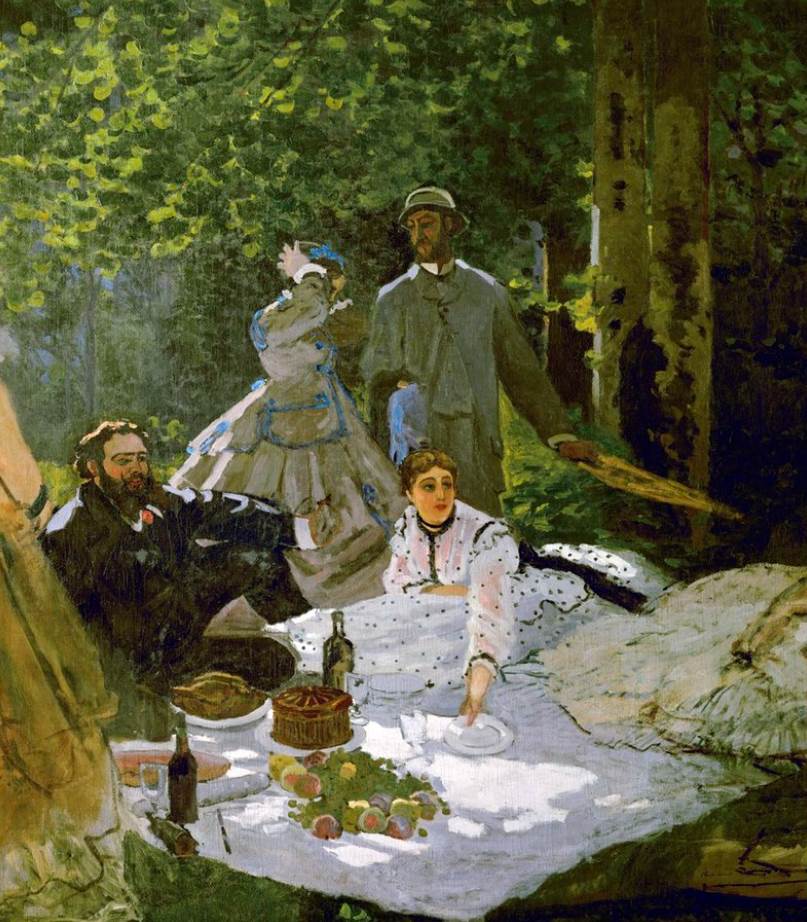
8. The Painter’s Studio – Gustave Courbet
- Date Created: 1855
- Dimensions: 361 × 598 centimeters (142 × 235 inches)
Gustave Courbet wasn’t just a model for Monet’s unfinished work but created monumental works of art himself. One of his ultimate masterpieces is a work titled “The Painter’s Studio.” When asked about the painting he mentioned “The world comes to be painted at my studio.”
Remarkably, this work wasn’t accepted to be displayed at the Exposition Universelle in Paris of 1855. Because of this, he created his exhibition, an event that would eventually transform into the Salon des Refusés.
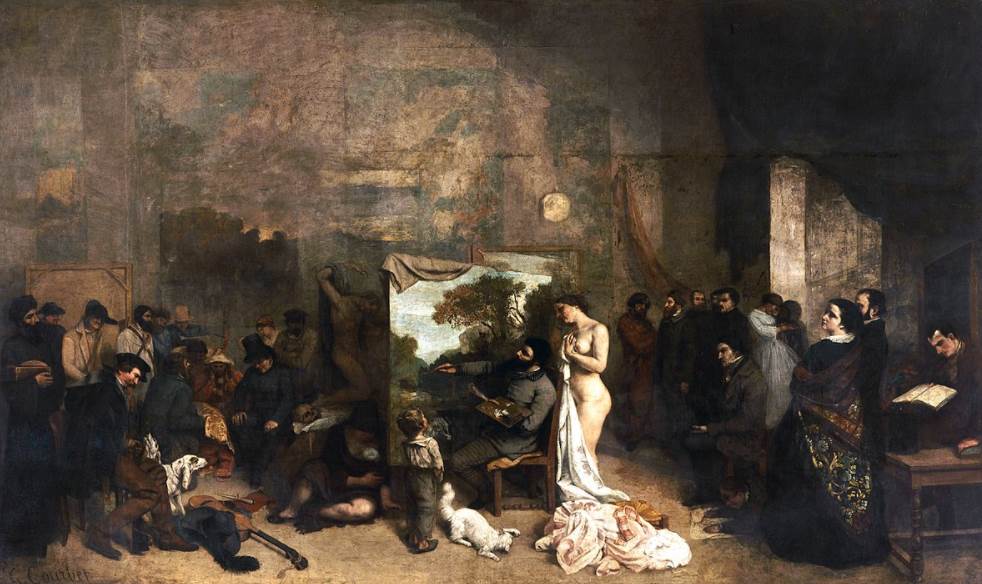
9. The Card Players – Paul Cézanne
- Date Created: 1894-1895
- Dimensions: 47.5 × 57 centimeters (18.7 x 22.4 inches)
The Card Players is the name of a series of artworks with the same theme created by Paul Cézanne in the 1890s. The painting at the Musée d’Orsay was created around 1894-1895 and all of these have become classic works of art.
To emphasize the popularity of these works, the Royal Family of Qatar paid an astounding $250 million back in 2011 for one of these works that was still privately owned. This was the highest price paid for a painting at that time. The other paintings of this series are scattered in museums all across the globe.
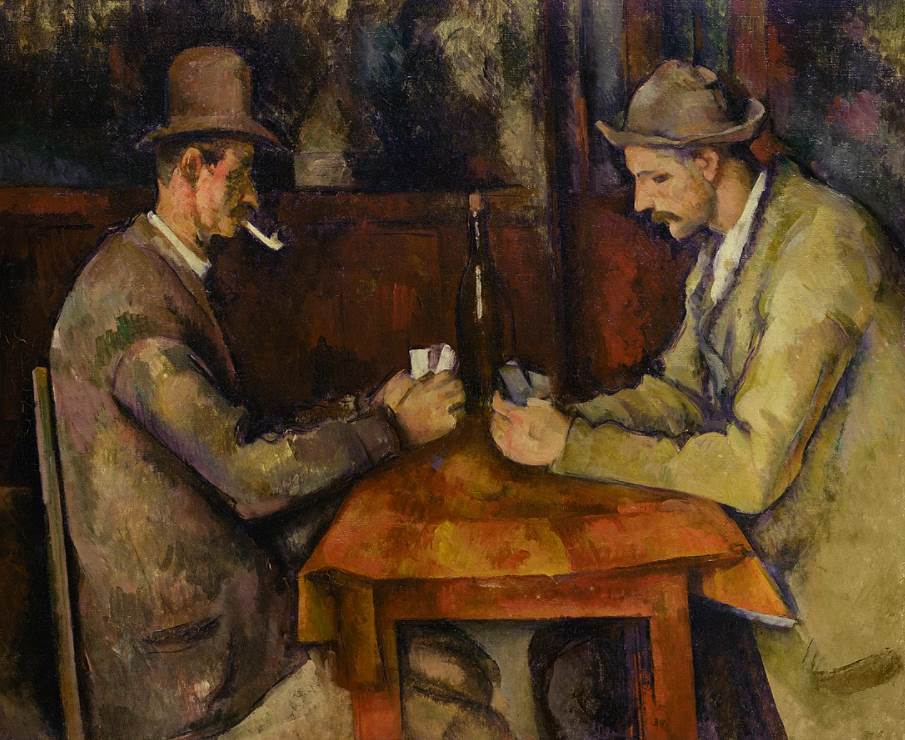
10. The Church at Auvers – Vincent van Gogh
- Date Created: 1890
- Dimensions: 74 × 94 centimeters (37 × 29.1 inches)
The Church at Auvers is one of the most intriguing paintings in the rich oeuvre of Dutch Post-Impressionist painter Vincent van Gogh, mainly because it was one of his final works before he took his own life in July of the year 1890.
This painting depicts the church located at the Place de l’église in a town called Auvers-sur-Oise, about 27 kilometers (17 miles) which is pretty much in the suburbs of the city today. It’s a work that reminded him of his period in the Netherlands, especially in Nuenen, something he mentioned in one of his letters to his brother Theo.
